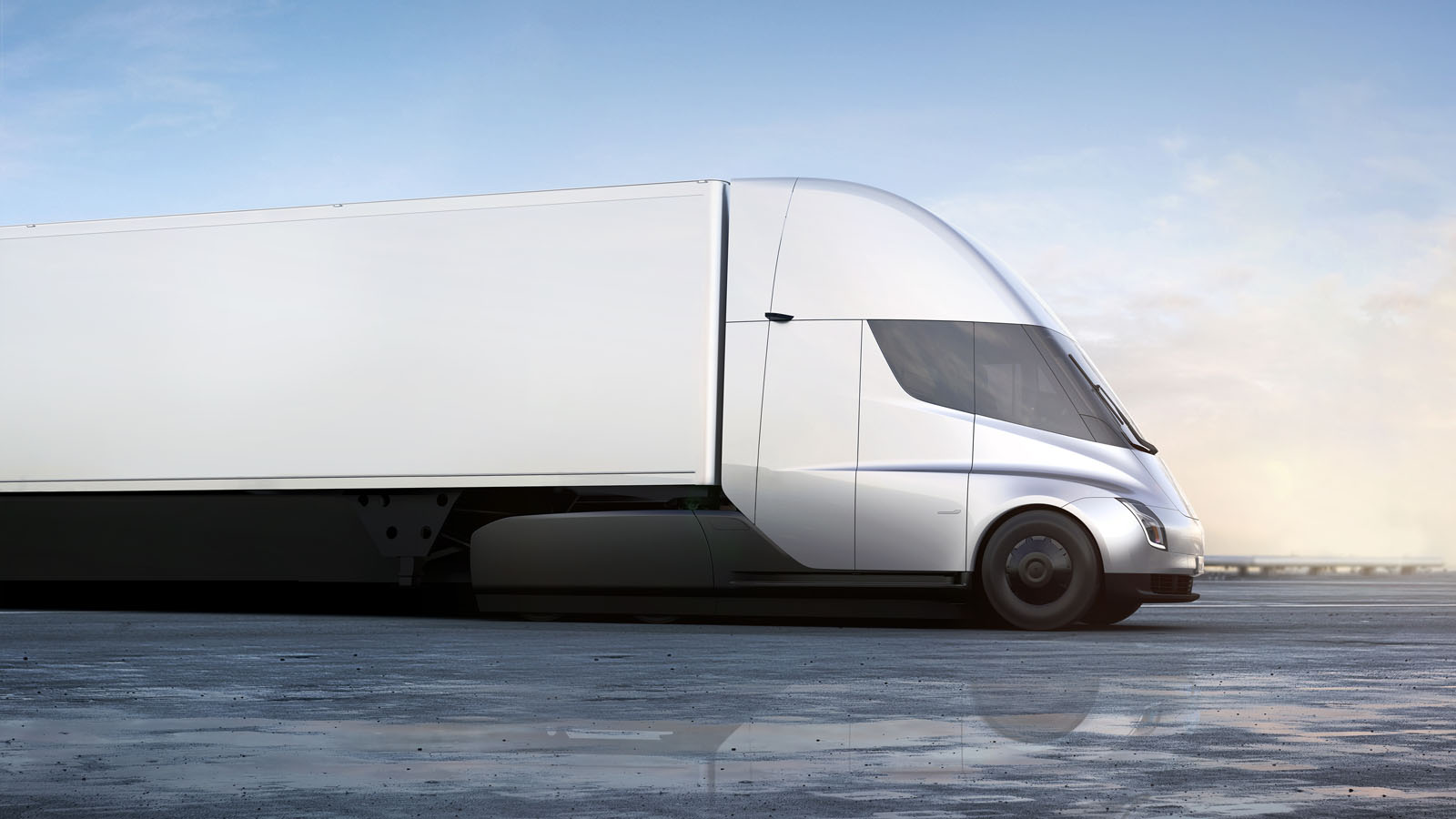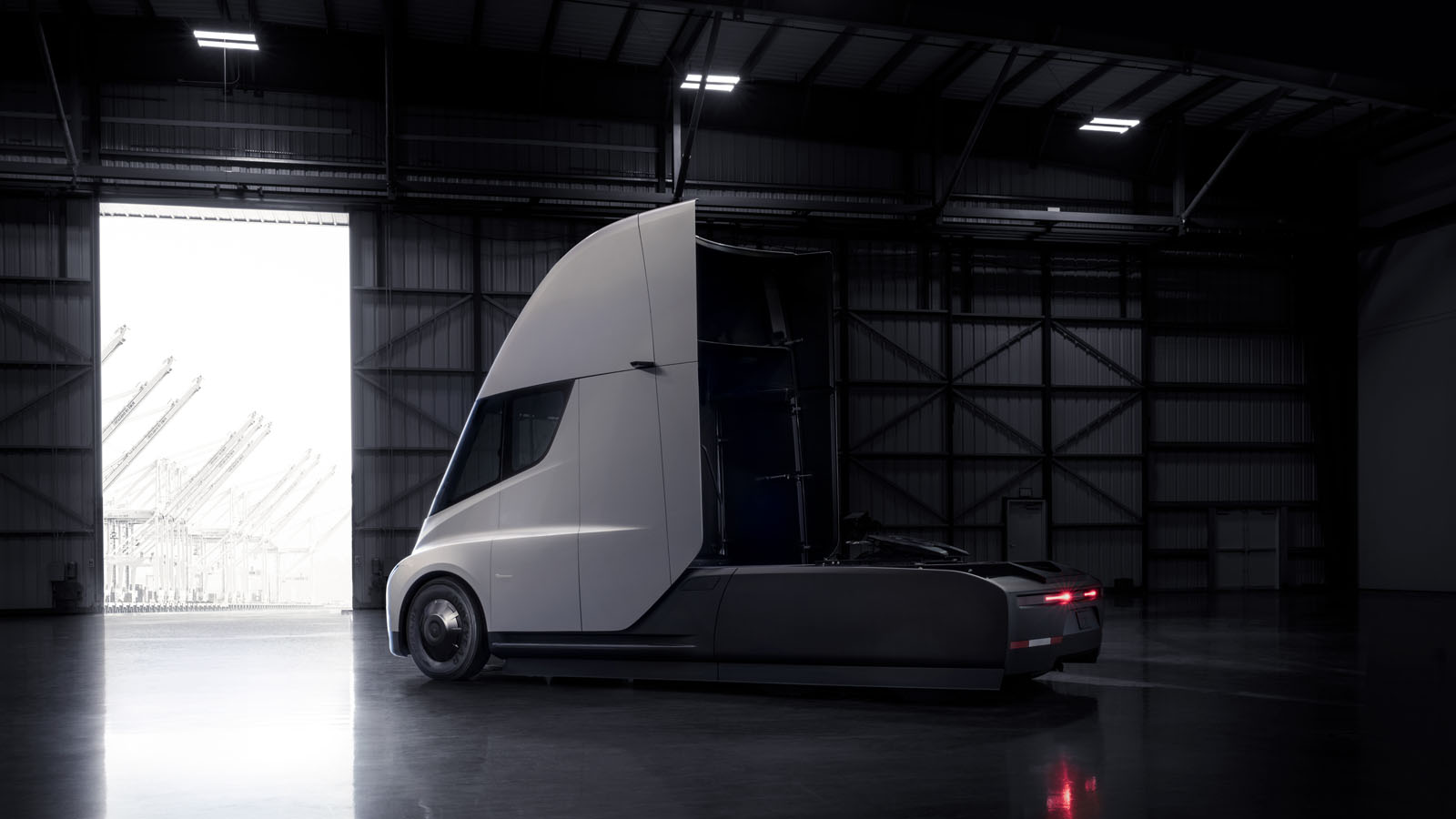The Tesla Semi is priced from $150,000 in the US, which equates to £112,410 at current exchange rates - far cheaper than expected.
The opening price for the all-electric lorry applies to an entry model that has a 300-mile range. The price for the headline-grabbing 500-mile lorry is $180,000, £134,892 at today's rate. Prices for diesel lorries in Britain start at about £85,000, by comparison.
Several US companies, including Walmart, the American owner of supermarket Asda, have reserved Semis, putting the model on course to enter service as soon as it makes production in 2019. The price to reserve a Semi quadrupled from $5,000 to $20,000 when the lorry was revealed two weeks ago.
At its unveiling in Hawthorne, California, US, where Tesla also showed a new Roadster sports car, company CEO Elon Musk said that the Semi, which was previously referred to as the Tesla Truck, was capable of accelerating from 0-60mph in 5.0sec.
Tesla Semi: UK truckers "don't care about performance"
He said it was also able to hit the mark in 20sec even when laden with a trailer fully loaded with 80,000lb (almost 36 tonnes) of cargo. This beats the average sprint time for regular diesel-powered rivals by around 40sec.
The Semi's energy recovery systems are claimed to be capable of recovering 98% of kinetic energy to the battery. For regular charging, the lorry can be connected to so-called Megachargers, which is a new high-speed DC charging solution, that is said to add about 400 miles in 30 minutes and can be installed at origin or destination points, much like the existing Superchargers.

Efficiency is boosted by a low wind resistance, with Tesla claiming that its Semi has a drag coefficient of 0.36Cd. It states that most of its competitors are closer to 0.65Cd.
Tesla refrained from going into further detail about the lorry's drivetrain and battery but did reveal that the vehicle features advanced autonomous technology to prevent jack-knifing of the trailer. Onboard sensors are installed to detect instability and can adjust torque sent to each wheel and independently actuate all brakes to prevent jack-knifing.
Additionally, surround cameras provide autonomous object detection and reduce blind spots, alerting the driver to safety hazards and obstacles. The lorry also introduces a new Enhanced Autopilot system, with automatic emergency braking, automatic lane keeping, lane departure warning and even event recording.
The Tesla Semi can travel in a convoy, allowing one or several Semis to autonomously follow a lead Semi.

Alongside the claims for performance and safety, Musk also said that the Semi would provide users with massive savings. Figures produced by Tesla state that owners "can expect to save $200,000 or more in savings over a million miles based on fuel costs alone".
Production is due to start in less than two years, at which time Musk believes the company's "production bottlenecks" will be history.
These production issues relate to supply difficulties with the Model 3. They caused the reveal of the Semi to be delayed by several weeks. Tesla's resources have also been under demand helping to supply Puerto Rico with power following Hurricane Maria.
Read more about the Tesla Model 3's production bottlenecks here
The bottlenecks have hindered Model 3 deliveries from Musk's initial delivery plan, set out in Tesla's second-quarter plan, with 220 Model 3s delivered in the third quarter compared with a targeted 1500.
Tesla also has a Model Y small SUV, an electric cargo van, a minibus and a pick-up truck all slated for introduction in the coming years.
Read more
Tesla: "Model 3 is not the next-generation Tesla"
Tesla Model Y to lead ambitious range expansion plans
2017 Tesla Model S P100D review
Tesla Model S 60 and 60D killed off due to low sales